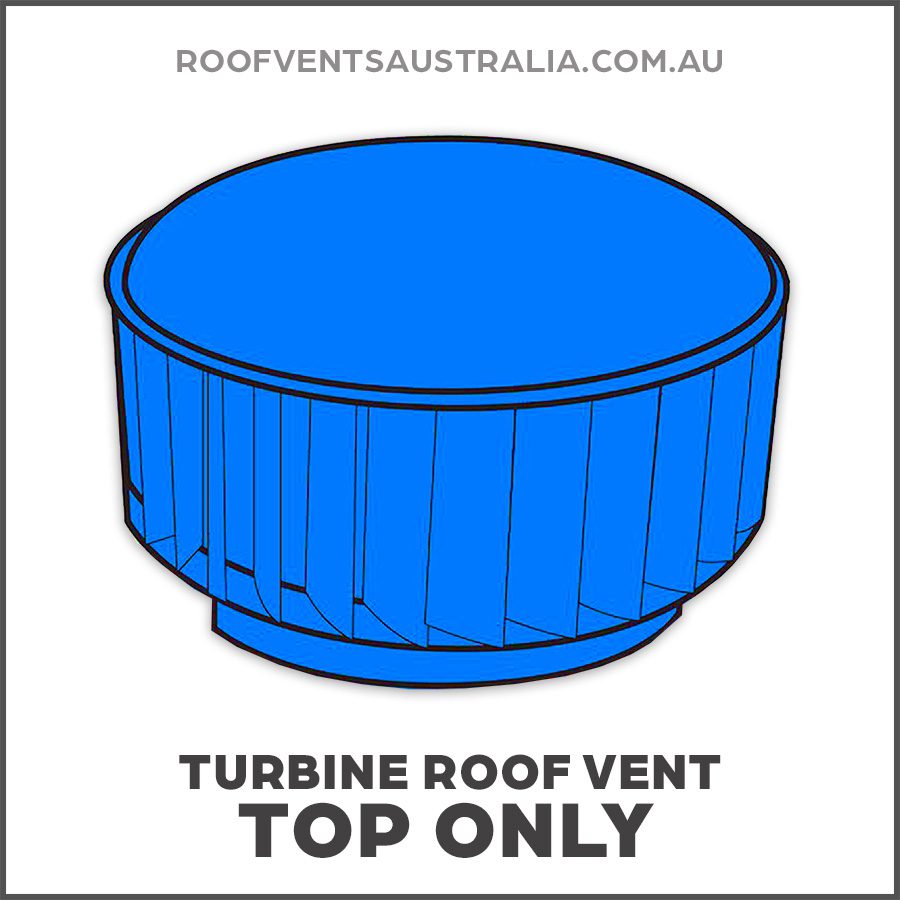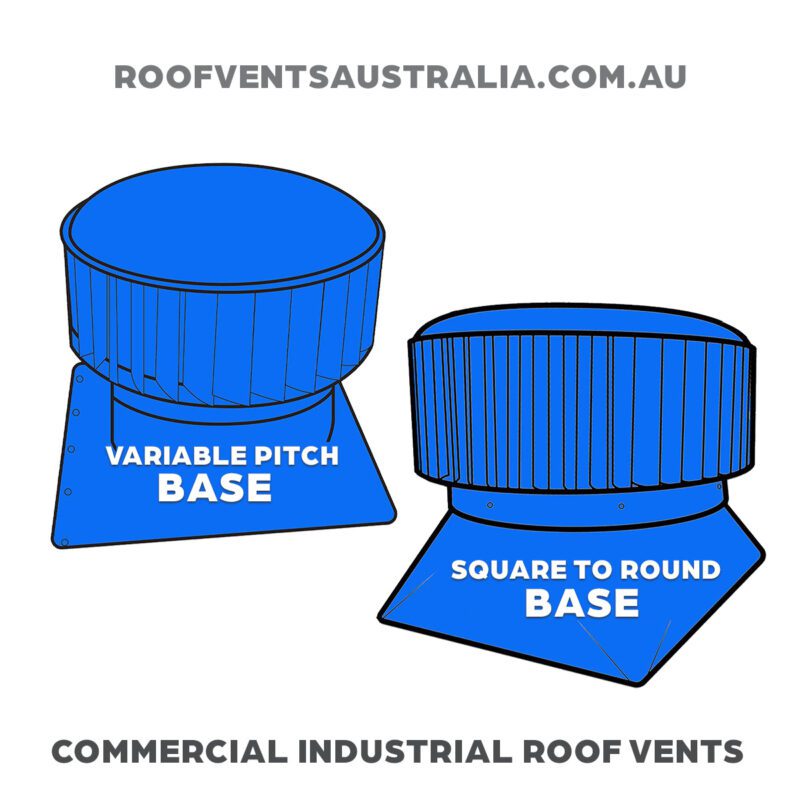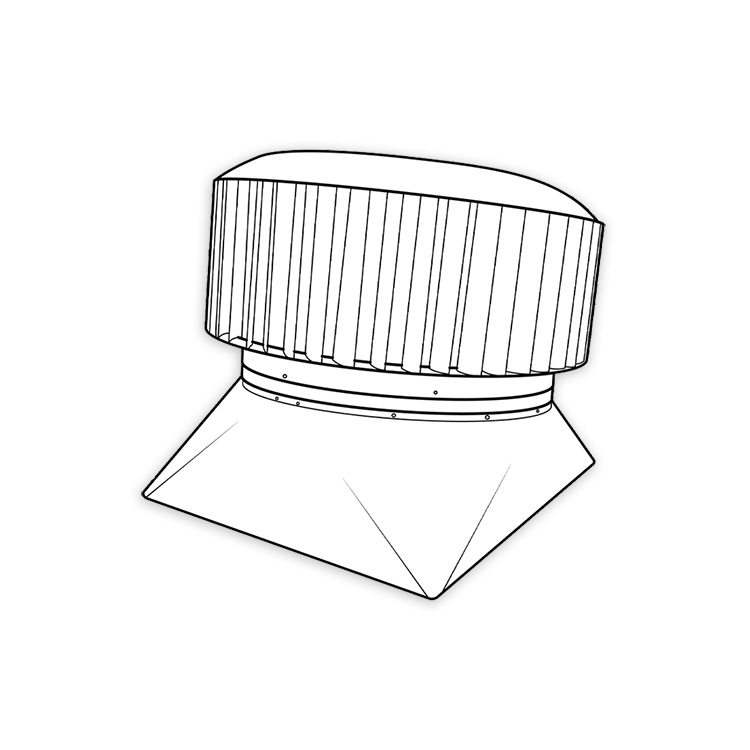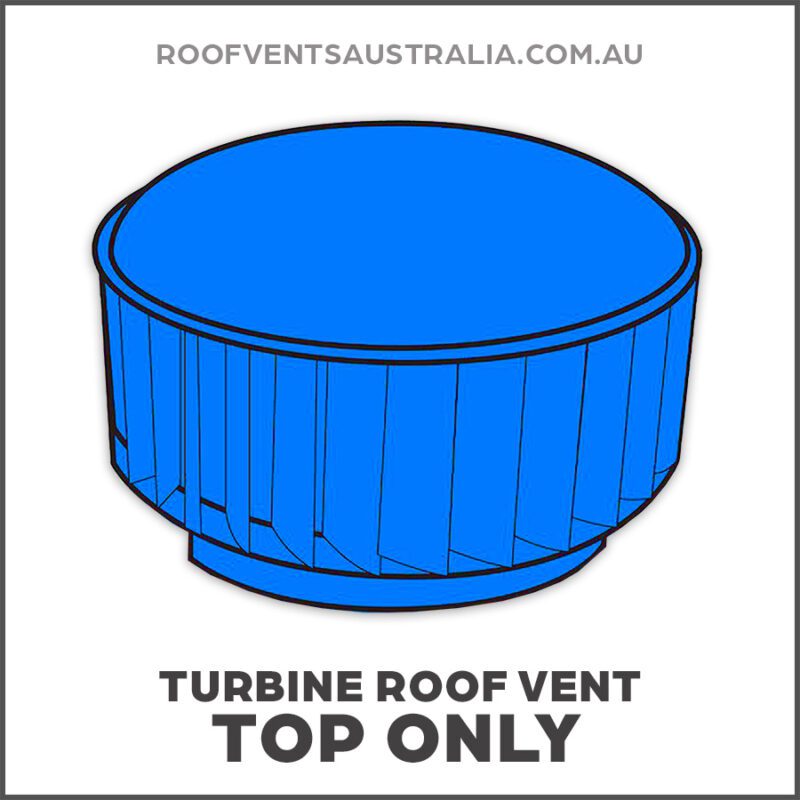Industrial Turbine Roof Vents TOPS ONLY
$500.00 – $2,415.60 & Free Shipping
- FREE SHIPPING (METRO SYDNEY)
- OTHER AREAS ADDITIONAL FREIGHT – POA
- 1 300 564 612 – FOR SHIPPING QUOTE
- USE ORDER FORM INSTEAD >
- CHOOSE OPTIONS BELOW
Description
Industrial Turbine Roof Vent Top Only
- All Aluminium, Anti-Corrosive Construction
- Comes in Mill Finish or Colorbond
- 15 Year Manufacturers Warranty
- PDF Download Click Here
**Maximising Roof Ventilation: A Comprehensive Guide for Australians**
Ventilation plays a very important role in creating comfortable and healthy indoor environments for residential as well as commercial buildings. When it comes to residential living, effective roof ventilation systems play an even more vital role especially when one looks at places like Australia and other countries in the southern hemisphere that experience summer often with temperatures of 30 to 45 degree Celsius and winter considerably colder by 10 to 15 degree, depending on different parts of the country. While there are many options available today for roof ventilation systems, choosing the right one is only possible when you have some initial learning about the different options available and their merits.
**Understanding Roof Ventilation**
Roof ventilation serves multiple purposes, including:
1. Temperature control: Properly ventilated homes resist the buildup of hot air in the attic or roof space. This helps moderate indoor air temperature in hot weather (avoiding the use of cooling systems) and prevents moisture build-up in cool weather.
2. **Moisture Control**: ventilation controls moisture which not only leads to the growth of mould but also affects the wooden members of the structure and begins to destroy the insulation.
3. Improved air quality: Air exchange through ventilation flushes out stale air, indoor pollutants and odours to improve indoor air quality for occupants.
**Types of Roof Vents**
1. **Whirlybird Vents:**
– Whirlybird vents (also called a turbine vent or rotary vent) is one of the most popular roof vents, using wind energy to create hot air within the building. The hot air is then drawn out of the roof cavity, and the space is exchanged with cooler outside air.
– Whirlybird vents are available in different diameters, with the smaller 250mm to 300mm sizes being more common. You can also get larger sizes for heavy-duty ventilation.
2. **Static Vents:**
– Static vents (also termed ridge vents or box vents): these devices channel air into the roof with no moving parts. They are usually fixed atop a roof, along the ridge, or at predetermined points to create a flow path.
– Because static vents rely on natural convection and pressure differentials for expulsion, they do not rotate.
3. **Solar-Powered Vents:**
– Modern solar-powered alternatives use solar energy to drive a fan, enhancing the ventilation performance while eliminating dependence on wind. Such vents are especially relevant for spaces with limited wind exposure.
4. **Powered Vents:**
– Powered vents are motorised devices with electrically driven fans that provide high airflow rates and can be useful for buildings requiring specialised ventilation. But they require electricity to operate, which can make them less energy-efficient than passive ventilation possibilities.
**Comparing Whirlybird Vents to Alternatives**
1. **Effectiveness:**
– Whirlybird vents are an effective roof ventilation to ventilate the roof space in the area where wind speed is moderate to high. But the performance efficiency of the ventilator may be affected by factors such as wind direction, roof style, and installation degree of perfection.
– Solar-powered vents reliably introduce minimum airflow at all times: they still ventilate efficiently even when the wind is still. In areas with infrequent wind exposure or calm periods, these systems typically leave no unventilated space.
2. **Cost and Installation:**
– Whirlybird vents are significantly cheaper to purchase and install than alternatives using solar or electric power, and involve minimal technical maintenance after installation.
• Solar-powered and electric-powered vents can have higher upfront costs due to the addition of more components and installation requirements, but it can lead to significant energy savings and operational continuity over the long term.
3. **Durability and Maintenance:**
– whirlybirds have very few moving parts, and so are less likely to suffer mechanical failure than powered vents, but they will need occasional greasing and checking to ensure they continue to work well.
solar-powered vents which, in addition to the panels, include electronic components that might have to be repaired periodically (every few years if not missed) and they definitely need maintenance from time to time (cleaning the solar panels and checking that the fan is working properly).
**Common Concerns and Considerations**
1. **Vent Size and Placement:**
– the size of vents and the position at which they are installed depend necessarily on requirements such as the scale and design of the building as well as the nature of ventilation undertaken.For instance, in a home, a small whirlybird vent would suffice, whereas for more commercial buildings, one vent can be easily inadequate, and several would need to be used on various sections of the ceiling, evenly spaced, for proper ventilation.
2. **Eave Vents and Complementary Ventilation:**
– Eave vents (also known as soffit vents or gable vents) can work with whirlybird vents to create a balanced ventilation system, where fresh air can enter the roof space. This not only allows for good airflow, but also mitigates moisture accumulation within the roofs cavity.
3. **Condensation and Insulation:**
– as it prevents condensation problems in the roof spaceGood ventilation combined with insulation measures help to maintain the correct humidity level in a building and prevent condensation damage including mould, peeling paint and structural damage.
4. **Regulatory Compliance:**
– Building and fire codes or building permits might specify certain vents that must or should be used in the construction or renovation of a house. This may be a requirement to follow a specific standard in order to avoid problems or unwelcome surprises in the future, either with inspection agencies or insurance companies.
**Conclusion**
In conclusion, properly installed roof ventilation plays a vital part in maintaining a healthy indoor environment, including air quality and the comfort of occupants, as well as maintaining the structural integrity of the building. Whirlybird vents are a cheap and effective ventilation method due to their simplicity of design that harnesses the power of wind and utilises no electricity. However, there are alternatives to whirlybirds like solar-powered vents and static vents that can provide greater reliability in ventilation and more efficient use of energy.
Climate, size of your building and budget are critical factors to select from the available ventilation systems for your property. Take the time to work with a capable roofing professional to determine your specific ventilation needs and to choose a system that will provide the best possible indoor comfort along with long-term results. Invest in the right roof ventilation today to ensure a safer, energy-efficient and long-standing building in the future.
Additional information
| Sizes (Tops Only) | TOP ONLY Ampelair SV300, TOP ONLY Ampelair SV450, TOP ONLY Ampelair SV600, TOP ONLY Ampelair SV800, TOP ONLY Ampelair SV950 |
|---|---|
| Colorbond™ | Mill Finish (Metal Look), Basalt, Bluegum, Classic Cream, Cottage Green, Deep Ocean, Dover White, Dune, Evening Haze, Gully, Ironstone, Jasper, Manor Red, Monument, Night Sky, Pale Eucalypt, Paperbark, Shale Grey, Southerly, Surfmist, Wallaby, Woodland Grey, Windspray, Zincalume |
| Shipping to: | QLD, NSW, VIC, SA, WA, ACT, TAS |




